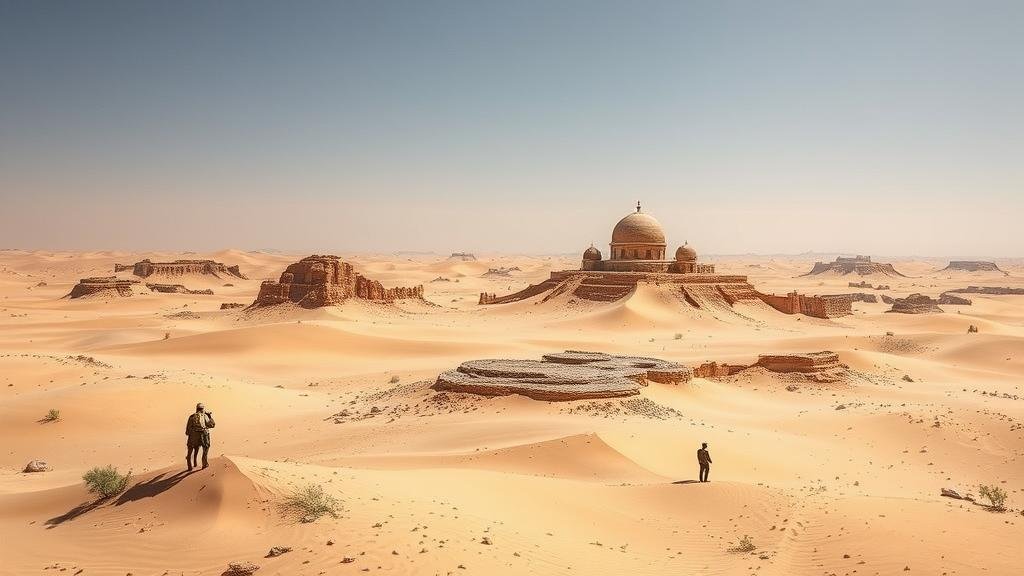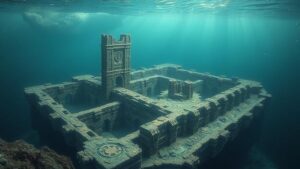Investigating the deserts of northern Arabia for the legendary city of Ad, described in the Quran.
Investigating the Deserts of Northern Arabia for the Legendary City of Ad
The quest for the ancient city of Ad, as mentioned in the Quran, has intrigued historians, archaeologists, and adventurers alike. The story of Ad portrays a civilization that flourished in the deserts of northern Arabia, only to be obliterated due to their disobedience to divine commandments. This article explores the historical context, geographical considerations, and ongoing research efforts aimed at uncovering the truths hidden within these sands.
The Historical Context of Ad
The city of Ad is primarily referenced in the Quran, particularly in Surah Al-Araf (7:65-72). Historically, it is believed that Ad was located in the Arabian Peninsula, specifically in a region known as “Iram,†described as having lofty pillars and abundant gardens.
Scholarly interpretations suggest that the people of Ad were highly advanced, engaging in agriculture, trade, and architectural development. They are often depicted as powerful and prosperous but ultimately met their demise due to arrogance and the refusal to heed the warnings of their prophet, Hud.
Geographical Considerations: The Arabian Desert
The search for Ad is largely concentrated in the northern Arabian desert, particularly in the area known as Al-Ahsa, which is characterized by vast stretches of sand dunes, rocky plateaus, and occasional oases.
Archaeological surveys and satellite imagery have indicated potential ancient settlements in this region. Some key geographical features include:
- Al DÃwan Valley: Often cited as a potential location for Ad due to its verdant springs and archaeological finds.
- Wadi Al-Batin: This ancient waterway might have supported a thriving civilization, making it a strong contender for the site of Ad.
Archaeological Discoveries and Methodologies
Recent archaeological efforts have sought to uncover evidence of ancient civilizations in northern Arabia that may correspond to the descriptions of Ad in Islamic texts. Techniques employed include:
- Remote Sensing: Utilizing drones and satellite imagery to detect anomalies in the landscape that may indicate human settlement.
- Ground-Penetrating Radar (GPR): This non-invasive technique helps in exploring underground structures without excavation.
- Excavations: Traditional archaeological digs aimed at uncovering artifacts, pottery, and potentially, building foundations.
One notable excavation in 2018 near Al-Ahsa revealed remnants of a structure that could date back to the time of Ad. Archaeologists found pottery fragments and tools consistent with ancient Middle Eastern cultures, suggesting that this area may have been habitable during the time described in the Quran.
Challenges in the Search for Ad
The pursuit of the legendary city of Ad faces numerous challenges, including:
- Environmental Factors: The harsh conditions of the Arabian desert, including extreme temperatures and sandstorms, complicate both logistics and data collection.
- Historical Interpretation: The ambiguity of ancient texts adds layers of complexity to the search. Different interpretations of the Quran and local folklore can lead to various proposed locations.
- Political Sensitivities: Some areas may be off-limits for excavation due to political or cultural restrictions, further hindering research.
Real-World Applications and Cultural Significance
The investigation of Ad serves both historical and cultural purposes. Identifying potential locations provides insight into ancient Arabian civilization, shedding light on socio-economic structures, trade routes, and cultural exchanges. Also, exploring these ancient histories fosters a deeper understanding of the human experience and the lessons embedded in religious texts.
The find of structures potentially related to Ad could encourage tourism and cultural heritage initiatives, which would benefit local economies. Countries like Saudi Arabia are increasingly investing in cultural tourism, emphasizing the historical riches buried in their deserts.
Conclusion: The Ongoing Quest
The search for the city of Ad continues to bridge religion, history, and archaeology. While definitive evidence has yet to be discovered, the ongoing investigations shed light on the complexity of human civilization in ancient Arabia.
For those interested in exploring these themes, visiting archaeological sites and engaging with local scholars can provide rich, educational experiences. As research advances, the legend of Ad may transform from myth to historical reality, underscoring the value of continued exploration and understanding of our world’s past.



